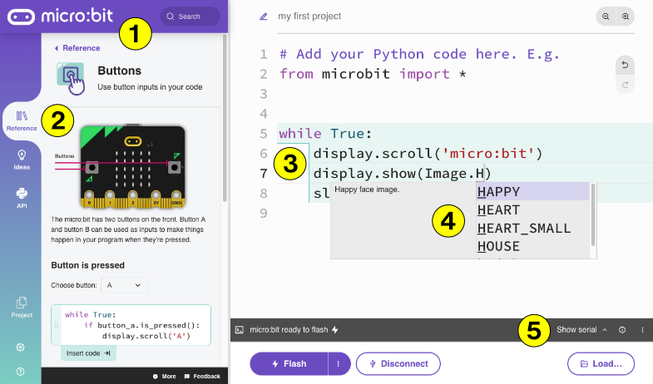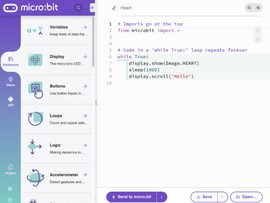Beta micro:bit Python editor is built for the classroom
The new micro:bit Python editor is now in beta. You can try it out now in your classroom and help to make it even better with your feedback
The Micro:bit Educational Foundation is building a new Python editor for coding the BBC micro:bit. It's been through alpha phase with user testing by teachers and it's now moved into beta testing.
It's packed with features designed to overcome some common barriers to starting out with text-based coding in class.

The new official beta Python editor for the BBC micro:bit
Micro:bit Educational Foundation
Key educational features
The new editor has been built from the ground-up with classroom use in mind. It aims to make text-based coding more accessible to students who may find it hard to engage with the subject by removing known barriers to learning. It's also designed to make computer science appeal to more diverse cohorts and hence expand their horizons.
Some of the key new features are numbered on the image above:
1. Bright, attractive user interface
We aim to make text-based coding more appealing to more young people, so the editor is bright and colourful. Line numbers are clearly displayed and you can make the text as large as you need for showing to your whole class.
2. Browse working code samples
Starting out in text-based programming, it can be hard for students to know what to type.
The Reference section enables students to explore, drag and drop examples of working code into the editor and use them straight away. This fosters independent and creative learning by making it easy to learn discover and use micro:bit features and core computing concepts like loops, variables and selection.
3. Code structure highlighting
Teachers tell us that Python's indentations can be a barrier to successful coding. So, we've added subtle line and colour highlighting to show where code should line up and help you and your students de-bug code.
4. Auto-complete
The auto-complete function gives you valid options as you type, to prompt you with possibilities and remove the need to remember the exact syntax of each command.
The editor also flags up potential errors such as variables or functions that have not been defined, or code that is unreachable. This can help spot simple typing errors before flashing code to a micro:bit.
5. Serial console
We've put a serial console into the editor so you can do more traditional Python coding using your keyboard input and printing to the screen. Your BBC micro:bit becomes a real, tiny physical Python computer you can program and hold in your hand!
You can also use the serial console to read any Python error messages that scroll across the micro:bit's display, making it easier to debug 'runtime' errors.
Access the editor in your first language
Python is used worldwide, so the editor will be translated into different languages for launch later this year. The beta editor is already available in French - switch language by clicking on the cog in the sidebar.
Help improve the editor
Help us test and improve the new micro:bit Python editor by using it with your students. You can give feedback in the editor itself, or sign up for our beta testing programme and you can help shape the future of learning text-based coding with the creativity of physical computing.
Watch it in action
This short video shows how some of the beta editor's features work in practice:
Detailed guide
You can find more detailed information on how to use the new micro:bit Python editor on the micro:bit support site, including short video guides.

